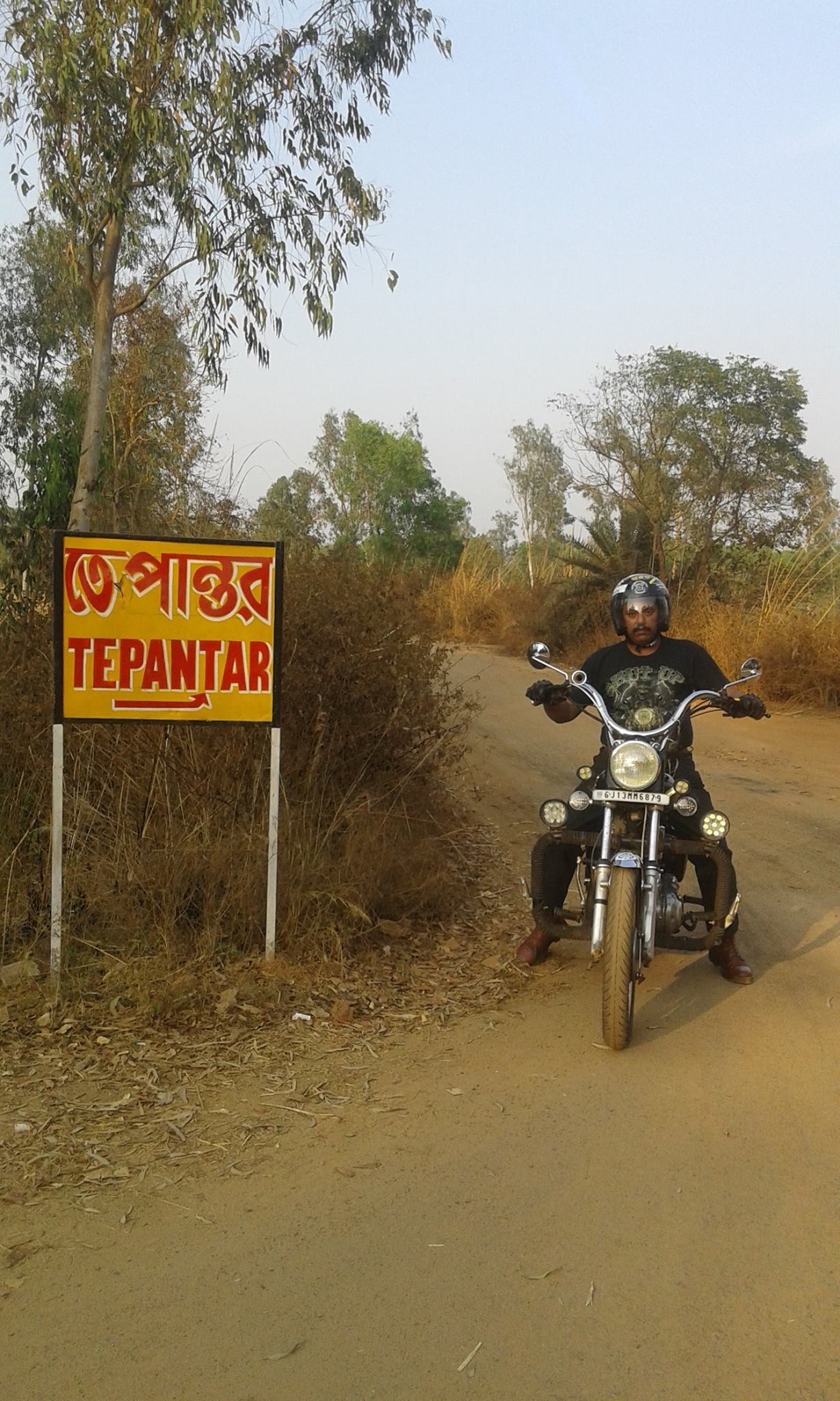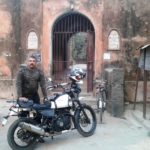On My quest to know Bengal on two wheels, I had this time rode solo to another famous landmark of Bengal, The Deul (temple) of Ichai Ghosh, on the border of Bardhaman and Birbhum district of Bengal, bang on the Ajay River to village BONOKATHI. Bonokathi, a small village has everything to captivate a traveller’s mind — a dense jungle with a temple, a thousand-year-old brick tower with an interesting history and a river with an excellent view.
How To Reach
As one travels from Kolkata along NH2, one needs to move along the Panagarh Bypass. From the Kanksa Block, take a right turn towards the Suri-Shantiniketan approach along the Jharul-Ruppur Rd, cross the Kanksha Forest Block, cross Trilolechandrapur, the Beldanga Bananchal and reach 11 MILE. From there turn left and follow the road markings to DEUL. About 4 km short of Deul, one will come across the turning and roadsign to another interesting place TEPANTAR. As one reaches the bank of the River Ajay, the tall tower of The ICHAI GHOSH DEUL will welcome you.
The Story
Some books say this place was known as Gopbhumi and was an independent state before it merged with the Pala empire. During the reign of Naya Pala, son of Mahipala, in c. 1038 AD, the dynastic rule started to crumble. Many local rulers announced their independence from the Pala king. Mahamandalik Echhai Ghosh announced himself a sovereign king and refused to pay tax to the ruler of Gour, the then capital of Bengal. Echhai Ghosh defeated Karna Sen, a local king, and captured several parts of Burdwan, proclaiming himself the ruler of independent Gopbhumi. Years later, Lau Sen, son of Karna Sen, avenged his father’s defeat by killing Echhai Ghosh on the banks of river Ajay. The place where he was killed is called Kadunedanga. It was believed that after his death Goddess Durga, whom he worshiped, wept for many days. History is surprisingly silent after this. There is no record of who constructed the brick tower — also called a deul. Some think it was built by the next generation of Gop kings as a memorial to their forefathers. The common version is that it was constructed by Rani Bishnukumari, a queen of the Burdwan royal family. Others think it was constructed by Raja Chitra Sen while some say it was constructed by Echhai Ghosh. But according to archaeologists, the bricks of the tower belong to the 11th century, long after Echhai Ghosh’s time .
The Deul
This brick built temple of the sikhara type without any image is traditionally known as the temple of Ichai Ghosh,who was supposed 2 have constructed this temple of Goddess Bhagawati.This huge temple of burnt bricks towers to 50 feet in height and is distinct by its architecture and engravings. The 50ft high structure, more than 900 years old, which may have been a watch-tower, now houses a shivalinga. The slim and solid building reveals the influence of the Orissa temple style. The tower has five steps and the upper part is decorated with floral designs and human figures. Each wall is embellished with bricks made of terracotta. The temple-like design on the tower has a kalash and a face — probably of the Sun God or Yaksha — along with floral designs and a woman playing the dholak. All sides of the building have the same design except the human figure, which keeps changing. On the right corner is a defaced figure in the Nataraja style. It is said that Lakshman Sen took refuge in this temple, built by Echhai Ghosh, while escaping from his capital Gour in 1205 after he was vanquished. According to legend, Jayadev, the author of Gita Govinda, had also visited this temple, though he was a Vaishnav and the temple belonged to the Shakta tradition.
Present State
The tower is now maintained by the Archeological Survey of India and is fenced but signs of inadequate care is apparent. One can find plants growing out of the wall and cattle roaming around. In 1990, the structure was vandalised by treasure-seekers but they found nothing. The responsibility of the present temple was handed over to the royal family of Hetampur. Later it was given to a priest’s family in Bishnupur village. It is at present owned by the government.Though exquisite in its architecture, and wild in approach, the signs of non caring is aplenty. Normal rubbish, dogs and cat, cattle abound plenty beside the tea shop just beside the Deul. Nevertheless, it’s a place worth visiting to relive the history of Bengal and enjoy the ride along the sal pial jungle and riverbank.





i am buying a 100cc tvs bike..give me some tips..i would like explore nearby lucknow..